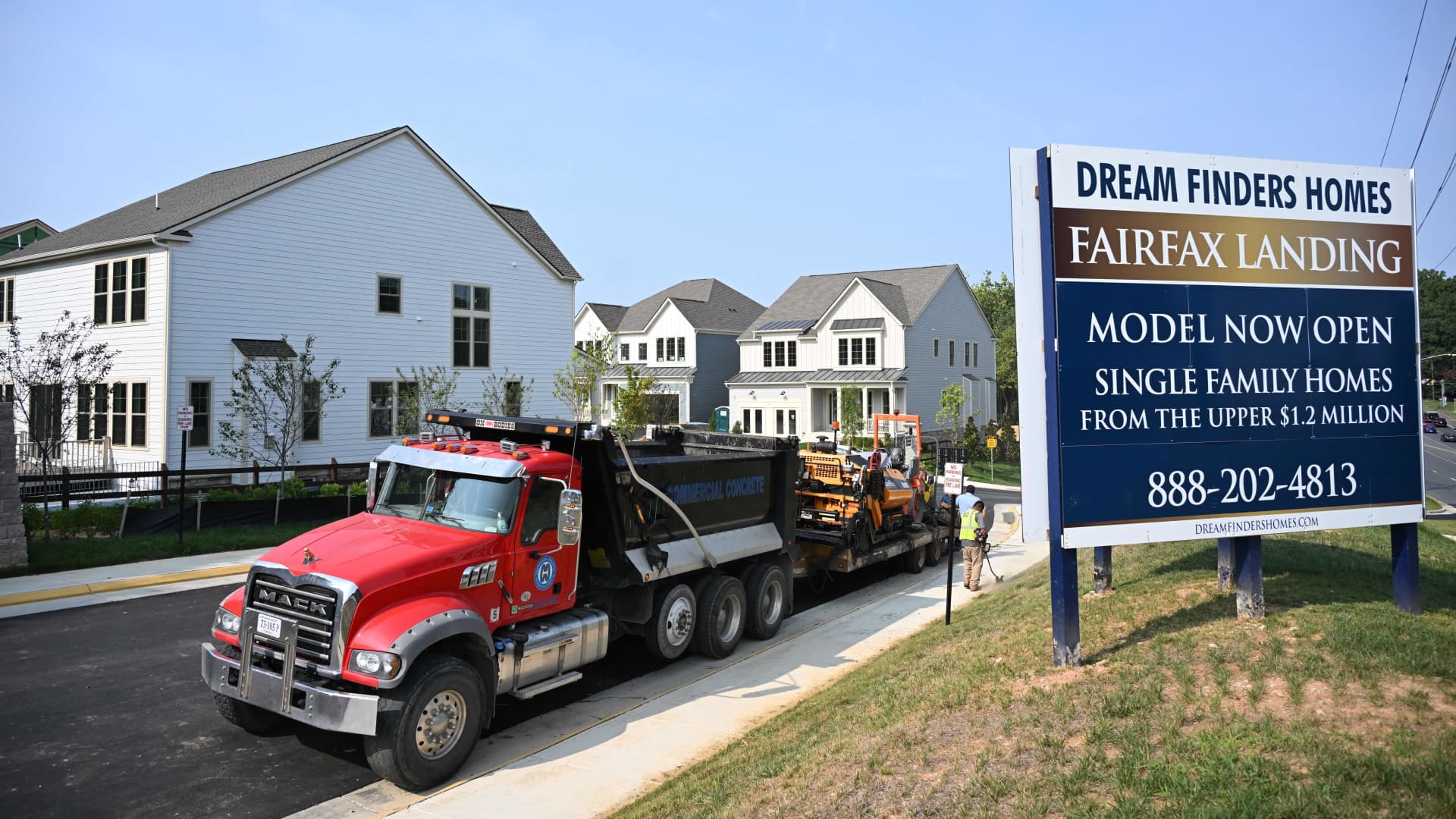Being able to buy a home keeps getting harder.
The National Association of Realtors said earlier this month that its housing affordability index fell during the second quarter to its lowest level on record. The reading came in at 92.7 compared with 101.8 in the first quarter. It’s also well below a 180.4 level reached in 2021.
A reading of 100 signals that families earning the median income have the amount of money needed to buy a median-priced home. A reading below points to insufficient median family income to buy a home. The data goes back to 1986.
Incredibly, housing is now less affordable than it was prior to the Great Financial Crisis — when a complete breakdown in lending standards led to a frenzy of speculation that ended in a 33% peak-to-trough decline in housing prices (based on the S&P Case-Shiller 20-City home price index) from July 2006 to April 2009.
Should this make us nervous?
The decline in housing affordability has obviously been highly influenced by the huge increase in mortgage rates, which are now around 7.2%, according to data from Freddie Mac. That’s compared to an average of 4% from the end of the Great Recession in 2009 until the end of 2021.
In fact, current mortgage rates are nearly triple the level they were at the end of 2020 and beginning of 2021 — when they bottomed out at around 2.7%. Not coincidentally, the first quarter of 2021 turned out to the be peak in housing affordability.
Since then, housing prices are up 28% despite the massive increase in interest rates. Median household income, which is currently growing at roughly the pre-Covid rate, has not grown nearly fast enough to offset the spike in mortgage rates and the increase in housing prices. The consequence has been the massive drop in housing affordability to new lows.
I know all the arguments.
A Wall Street Journal article on Wednesday entitled “How High a Rate Can Housing Take?” by Justin Lahart read: “On Wednesday, the National Association of Realtors reported that there were just 980,000 existing single-family homes for sale last month. That was the fewest during the month of July—normally a time of year when a lot of homes are on the block—on record stretching back to 1982.”
Housing prices remain elevated because there is an extreme lack of supply. Inventories of homes for sale are very low because nobody wants to move and give up their 3% mortgage. The trend toward “work-from-home” is another factor causing homeowners to remain in place and therefore suppressing housing inventory.
It will take years to bring housing supply back in line with demand because new home construction has been insufficient since the great financial crisis. Lending standards have improved dramatically since before the GFC.
The typical homeowner has much more equity than in the past. Interest rates should start coming down next year as it becomes clearer than inflation is on a sustainable path lower to the Federal Reserve’s 2% target. And so on.
All of this is likely true. But still, housing affordability is as low as it’s been since at least 1986. Many prospective first-time buyers are at risk of getting locked out of the market forever if something doesn’t change.
Can insufficient supply alone keep housing prices elevated in the face of such a big increase in borrowing costs? Is it realistic to think everyone will remain in place indefinitely just to keep their low mortgage rate, thereby preventing a flood of supply hitting the market? Will political pressure on the Fed compel the central bank to cut rates more quickly, thereby improving affordability?
These are all important questions, and I don’t have all the answers. My suspicion is that some combination of labor market softening, tighter bank lending standards, capital markets volatility and rising mortgage rates will bring an end to the Fed’s interest rate hikes sooner rather than later. Since as long as I can remember, the Fed has always chosen the path of least pain, and I don’t think this time will be any different.
If this means the Fed will implicitly adopt an inflation target above 2% for a short period, then I think that’s what is likely to happen. But ultimately, I continue to believe that the Fed’s interest-rate hikes to date will prove more than enough to slow the economy, reduce inflation to target and potentially induce a recession.
The “long and variable lag” has proven longer than expected, in no small part because homeowners wisely locked in super-low mortgage rates when they had the chance. But fixed-rate mortgages won’t be enough to nullify the impact of 525 basis points of interest-rate hikes in a historically short period of time.
Given its importance to the wider economy, a robust housing market will likely be a precondition to achieving a relatively seamless transition to long-term economic expansion. The housing affordability crunch is, and looks to continue to be, a risk factor that could not only hold back the economy’s growth potential but also cause a financial crisis if left unchecked. So, add another ball to the Fed’s juggling act.
